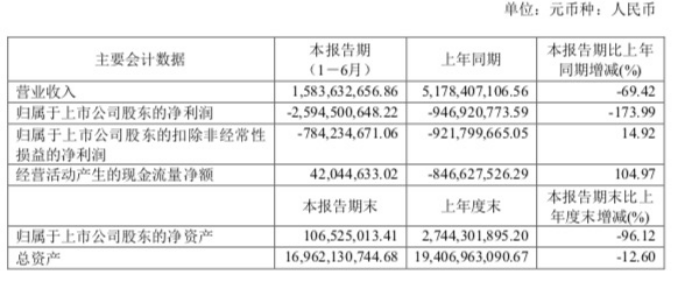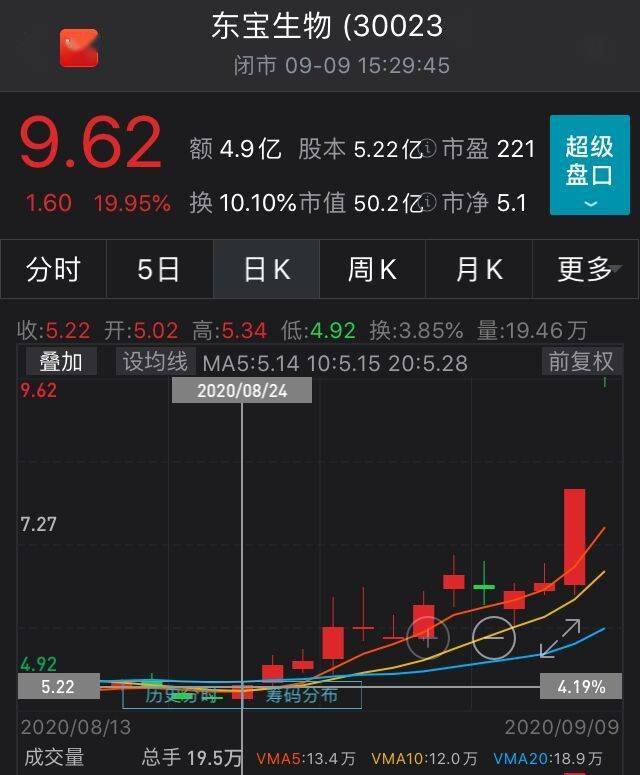然еҗҺз»‘е®ҡеҲ°еёғеұҖдёӯ пјҢ иҝҷж—¶еҖҷиҝҷдёӘUserзҡ„nameеұһжҖ§е°ұжҳҜиў«и§ӮеҜҹеҜ№иұЎдәҶ пјҢ еҰӮжһңuserNameж”№еҸҳ пјҢ еёғеұҖйҮҢйқўзҡ„TextViewжҳҫзӨәж•°жҚ®д№ҹдјҡи·ҹзқҖж”№еҸҳ пјҢ иҝҷе°ұжҳҜеҸҜи§ӮеҜҹж•°жҚ®еҜ№иұЎ гҖӮ
3пјүз”ҹжҲҗзҡ„з»‘е®ҡзұ»
еҲҡжүҚжҲ‘们иҺ·еҸ–з»‘е®ҡеёғеұҖжҳҜйҖҡиҝҮDataBindingUtil.setContentViewж–№жі•з”ҹжҲҗActivityMainBindingеҜ№иұЎе№¶з»‘е®ҡеёғеұҖ гҖӮйӮЈд№ҲActivityMainBindingзұ»жҳҜжҖҺд№Ҳз”ҹжҲҗзҡ„е‘ўпјҹеҸӘиҰҒдҪ зҡ„еёғеұҖз”ЁlayoutеұһжҖ§еҢ…еӣҙ пјҢ зј–иҜ‘еҗҺе°ұдјҡиҮӘеҠЁз”ҹжҲҗз»‘е®ҡзұ» пјҢ зұ»еҗҚз§°еҹәдәҺеёғеұҖж–Ү件зҡ„еҗҚз§° пјҢ е®ғдјҡиҪ¬жҚўдёә Pascal еӨ§е°ҸеҶҷеҪўејҸ并еңЁжң«е°ҫж·»еҠ Binding еҗҺзјҖ гҖӮ
жӯЈеёёеҲӣе»әз»‘е®ҡеҜ№иұЎжҳҜйҖҡиҝҮеҰӮдёӢеҶҷжі•пјҡ
//Activityoverride fun onCreate(savedInstanceState: Bundle?) {super.onCreate(savedInstanceState)val binding: MyLayoutBinding = MyLayoutBinding.inflate(layoutInflater)setContentView(binding.root)}//Fragment@Nullablefun onCreateView( inflater: LayoutInflater?, container: ViewGroup?, savedInstanceState: Bundle?): View? {mDataBinding = DataBindingUtil.inflate(inflater, R.layout.fragment_layout, container, false)return mDataBinding.getRoot()}4пјүз»‘е®ҡйҖӮй…ҚеҷЁ
йҖӮй…ҚеҷЁиҝҷйҮҢжҢҮзҡ„жҳҜеёғеұҖдёӯзҡ„еұһжҖ§и®ҫзҪ® пјҢ android:text="@{user.name}"иЎЁиҫҫејҸдёәдҫӢ пјҢ еә“дјҡжҹҘжүҫжҺҘеҸ—user.getName()жүҖиҝ”еӣһзұ»еһӢзҡ„setText(arg) ж–№жі• гҖӮйҮҚиҰҒзҡ„жҳҜ пјҢ жҲ‘们еҸҜд»ҘиҮӘе®ҡд№үиҝҷдёӘйҖӮй…ҚеҷЁдәҶ пјҢ д№ҹе°ұжҳҜеёғеұҖйҮҢйқўзҡ„еұһжҖ§жҲ‘们еҸҜд»ҘйҡҸдҫҝе®ҡд№үе®ғзҡ„еҗҚеӯ—е’ҢдҪңз”Ё гҖӮжқҘдёӘ
@BindingAdapter("imageUrl")fun loadImage(view: ImageView, url: String) {Picasso.get().load(url).into(view)}<ImageView App:imageUrl="@{venue.imageUrl}" />еңЁзұ»дёӯе®ҡд№үдёҖдёӘеӨ–йғЁеҸҜд»Ҙи®ҝй—®зҡ„ж–№жі•loadImage пјҢ жіЁйҮҠ@BindingAdapterйҮҢйқўзҡ„еұһжҖ§дёәдҪ йңҖиҰҒе®ҡд№үзҡ„еұһжҖ§еҗҚз§° пјҢ иҝҷйҮҢи®ҫзҪ®зҡ„жҳҜimageUrl гҖӮжүҖд»ҘеңЁеёғеұҖдёӯе°ұеҸҜд»ҘдҪҝз”Ёapp:imageUrl пјҢ е№¶дј еҖјдёәStringзұ»еһӢ пјҢ зі»з»ҹе°ұдјҡжүҫеҲ°иҝҷдёӘйҖӮй…ҚеҷЁж–№жі•е№¶жү§иЎҢ гҖӮ
5пјүе°ҶеёғеұҖи§Ҷеӣҫз»‘е®ҡеҲ°жһ¶жһ„组件иҝҷдёҖеқ—е°ұжҳҜе®һйҷ…еә”з”ЁдәҶ пјҢ е’Ңjetpack其他组件зӣёз»“еҗҲдҪҝз”Ё пјҢ еҪўжҲҗе®Ңж•ҙзҡ„MVVMеҲҶеұӮжһ¶жһ„ гҖӮ
// Obtain the ViewModel component.val userModel: UserViewModel by viewModels()// Inflate view and obtain an instance of the binding class.val binding: ActivityDatabindingMvvmBinding =DataBindingUtil.setContentView(this, R.layout.activity_databinding_mvvm)// Assign the component to a property in the binding class.binding.viewmodel = userModel<data><variablename="viewmodel"type="com.panda.jetpackdemo.dataBinding.UserViewModel" /></data>class UserViewModel : ViewModel() {val currentName: MutableLiveData<String> by lazy {MutableLiveData<String>()}init {currentName.value=https://www.isolves.com/it/cxkf/jiagou/2020-08-02/"zzz"}}6пјүеҸҢеҗ‘ж•°жҚ®з»‘е®ҡ
еҲҡжүҚжҲ‘们д»Ӣз»Қзҡ„йғҪжҳҜеҚ•еҗ‘з»‘е®ҡ пјҢ д№ҹе°ұжҳҜеёғеұҖдёӯviewз»‘е®ҡдәҶж•°жҚ®еҜ№иұЎ пјҢ йӮЈд№ҲеҰӮдҪ•и®©ж•°жҚ®еҜ№иұЎд№ҹеҜ№viewдә§з”ҹз»‘е®ҡе‘ўпјҹд№ҹе°ұжҳҜviewж”№еҸҳзҡ„ж—¶еҖҷж•°жҚ®еҜ№иұЎд№ҹиғҪжҺҘ收еҲ°и®ҜжҒҜ пјҢ еҪўжҲҗеҸҢеҗ‘з»‘е®ҡ гҖӮ
еҫҲз®ҖеҚ• пјҢ жҜ”еҰӮдёҖдёӘEditText пјҢ йңҖжұӮжҳҜEditTextж”№еҸҳзҡ„ж—¶еҖҷ пјҢ userеҜ№иұЎnameж•°жҚ®д№ҹдјҡи·ҹзқҖж”№еҸҳ пјҢ еҸӘйңҖиҰҒжҠҠд№ӢеүҚзҡ„"@{}"ж”№жҲҗ"@={}"
//еёғеұҖ activity_main.xml<?xml version="1.0" encoding="utf-8"?><layout xmlns:android="http://schemas.android.com/apk/res/android"><data><variable name="user" type="com.example.User"/></data><EditText android:layout_width="wrap_content"android:layout_height="wrap_content"android:text="@={user.name}"/></layout>еҫҲз®ҖеҚ•еҗ§ пјҢ еҗҢж · пјҢ иҝҷдёӘеҸҢеҗ‘з»‘е®ҡеҠҹиғҪд№ҹжҳҜж”ҜжҢҒиҮӘе®ҡд№үзҡ„ гҖӮжқҘдёӘ
object SwipeRefreshLayoutBinding {//ж–№жі•1 пјҢ ж•°жҚ®з»‘е®ҡеҲ°view@JvmStatic@BindingAdapter("app:bind_refreshing")fun setSwipeRefreshLayoutRefreshing(swipeRefreshLayout: SwipeRefreshLayout,newValue: Boolean) {if (swipeRefreshLayout.isRefreshing != newValue)swipeRefreshLayout.isRefreshing = newValue}//ж–№жі•1 пјҢ viewж”№еҸҳдјҡйҖҡзҹҘbind_refreshingChanged пјҢ 并且д»ҺиҜҘж–№жі•иҺ·еҸ–viewзҡ„ж•°жҚ®@JvmStatic@InverseBindingAdapter(attribute = "app:bind_refreshing",event = "app:bind_refreshingChanged")fun isSwipeRefreshLayoutRefreshing(swipeRefreshLayout: SwipeRefreshLayout): Boolean =swipeRefreshLayout.isRefreshing//ж–№жі•3 пјҢ viewеҰӮдҪ•ж”№еҸҳжқҘеҪұе“Қж•°жҚ®еҶ…е®№@JvmStatic@BindingAdapter("app:bind_refreshingChanged",requireAll = false)fun setOnRefreshListener(swipeRefreshLayout: SwipeRefreshLayout,bindingListener: InverseBindingListener?) {if (bindingListener != null)swipeRefreshLayout.setOnRefreshListener {bindingListener.onChange()}}}<androidx.swiperefreshlayout.widget.SwipeRefreshLayoutandroid:layout_width="match_parent"android:layout_height="match_parent"app:bind_refreshing="@={viewModel.refreshing }"></androidx.swiperefreshlayout.widget.SwipeRefreshLayout>
жҺЁиҚҗйҳ…иҜ»
- iOSжҖ§иғҪдјҳеҢ–д№ӢеӣҫзүҮжңҖдҪіе®һи·ө
- TCP йҮҚзҪ®ж”»еҮ»зҡ„е·ҘдҪңеҺҹзҗҶ
- жғізҹҘйҒ“жҳҜд»Җд№ҲеҚ з”ЁдҪ зҡ„з”өи„‘з©әй—ҙпјҢжӯЈзЎ®дҪҝз”ЁWindows 10жҹҘзңӢзЈҒзӣҳз©әй—ҙ
- йІӨйұјжҳҜеҠЁзү©зұ»еҗ— йІӨйұјжҳҜйұјзұ»еҠЁзү©еҗ—
- еӨ–жҳҹйЈһзўҹжҳҜеҗҰзңҹзҡ„еӯҳеңЁ UFOеӨ–жҳҹйЈһзўҹ
- жі°еқҰе°је…ӢеҸ·жІүжІЎзҡ„зңҹжӯЈеҺҹеӣ жі°еқҰе°је…ӢеҸ·жІүжІЎжҳҜйҳҙи°Ӣеҗ—
- semi-structured data д»Җд№ҲжҳҜеҚҠз»“жһ„еҢ–ж•°жҚ®?
- зңӢиӢ—йј“иЎЁжј”е“Ғй»„йҮ‘иҢ¶,жҖҺж ·еҲӨж–ӯдҝқйқ–й»„йҮ‘иҢ¶жҳҜеҗҰиҝҮжңҹ
- д»Җд№ҲжҳҜз®—жі•зҡ„еӨ§OиЎЁзӨәжі•
- Windows 10жҗӯе»әFTPжңҚеҠЎеҷЁ
















